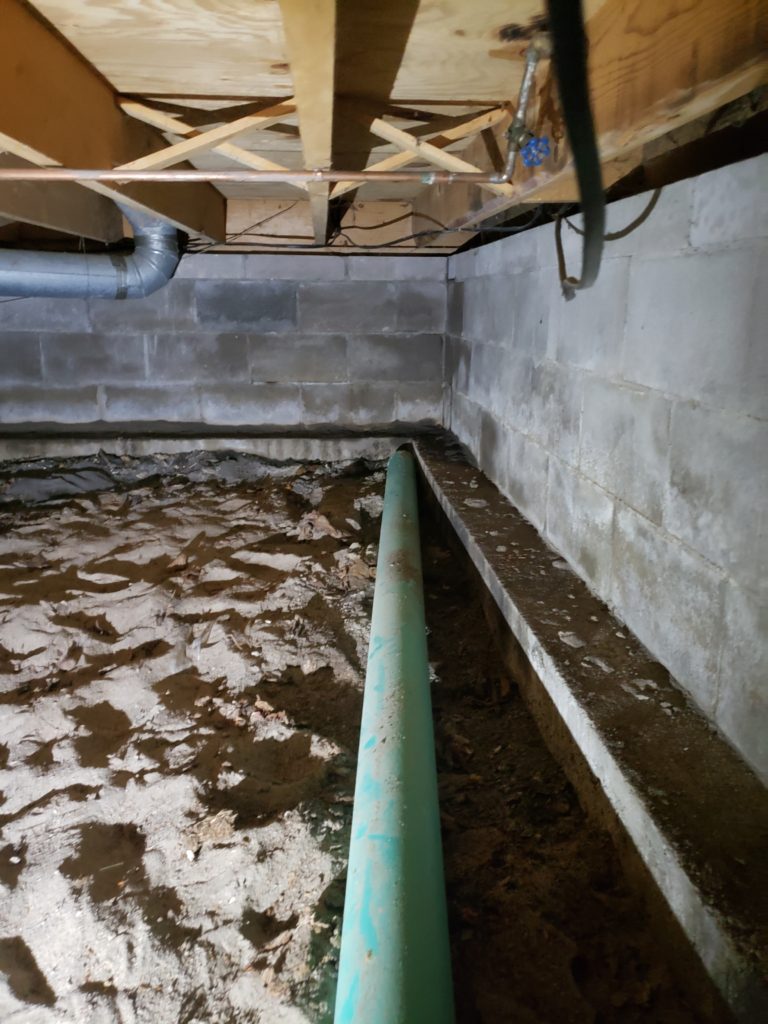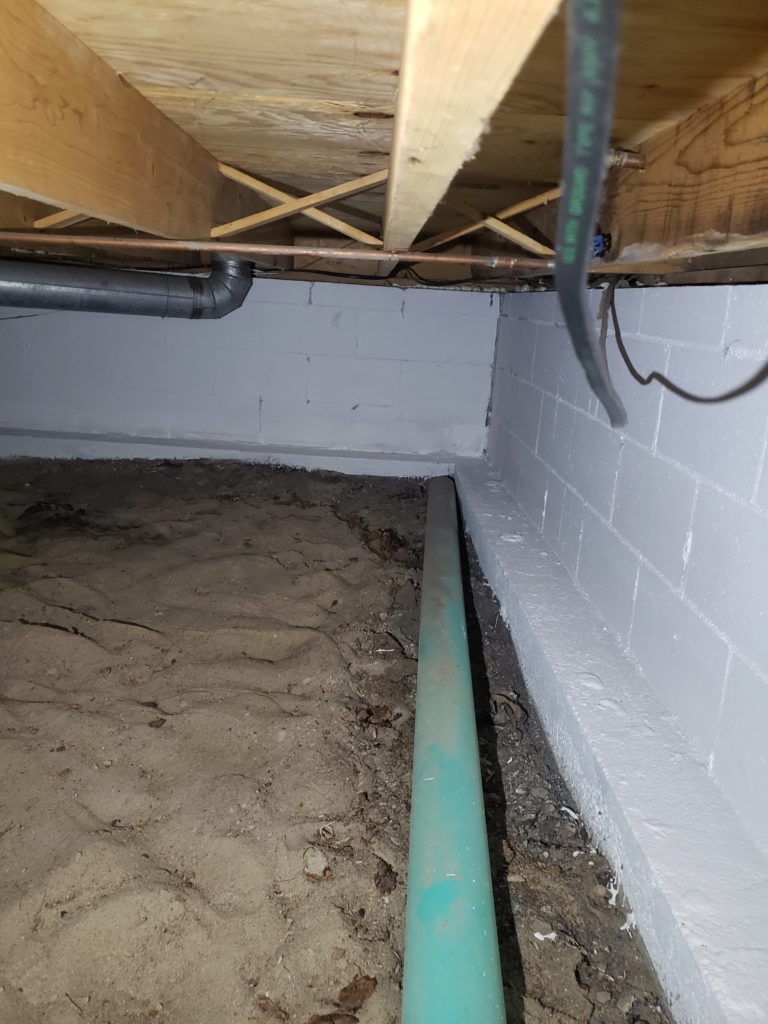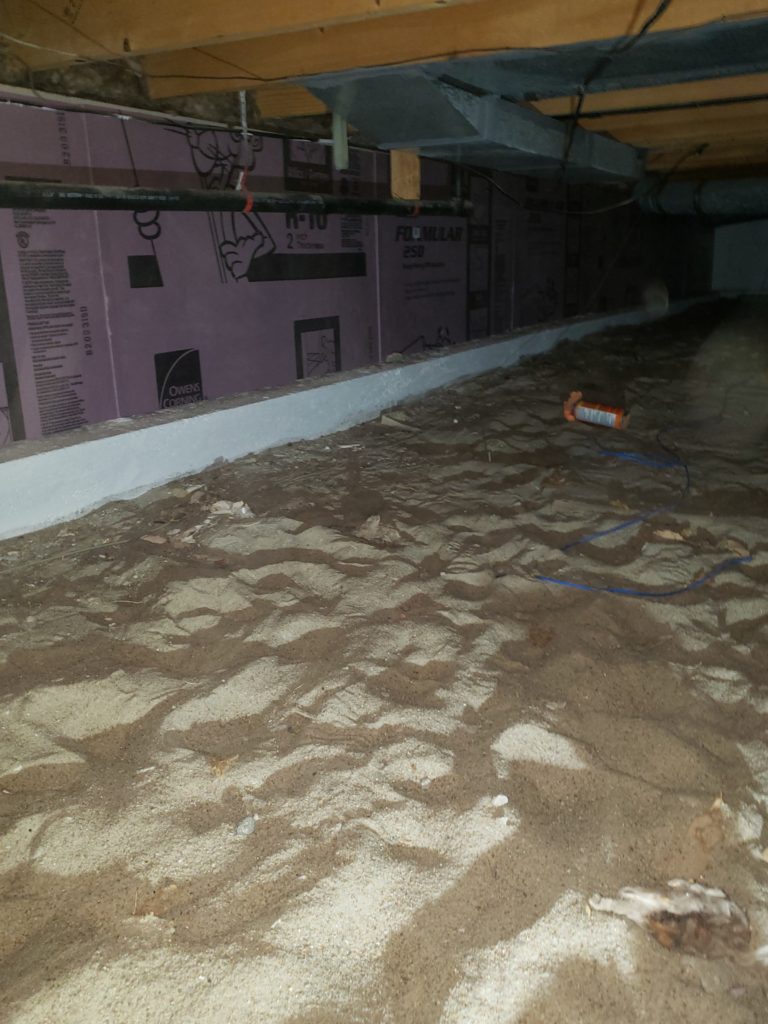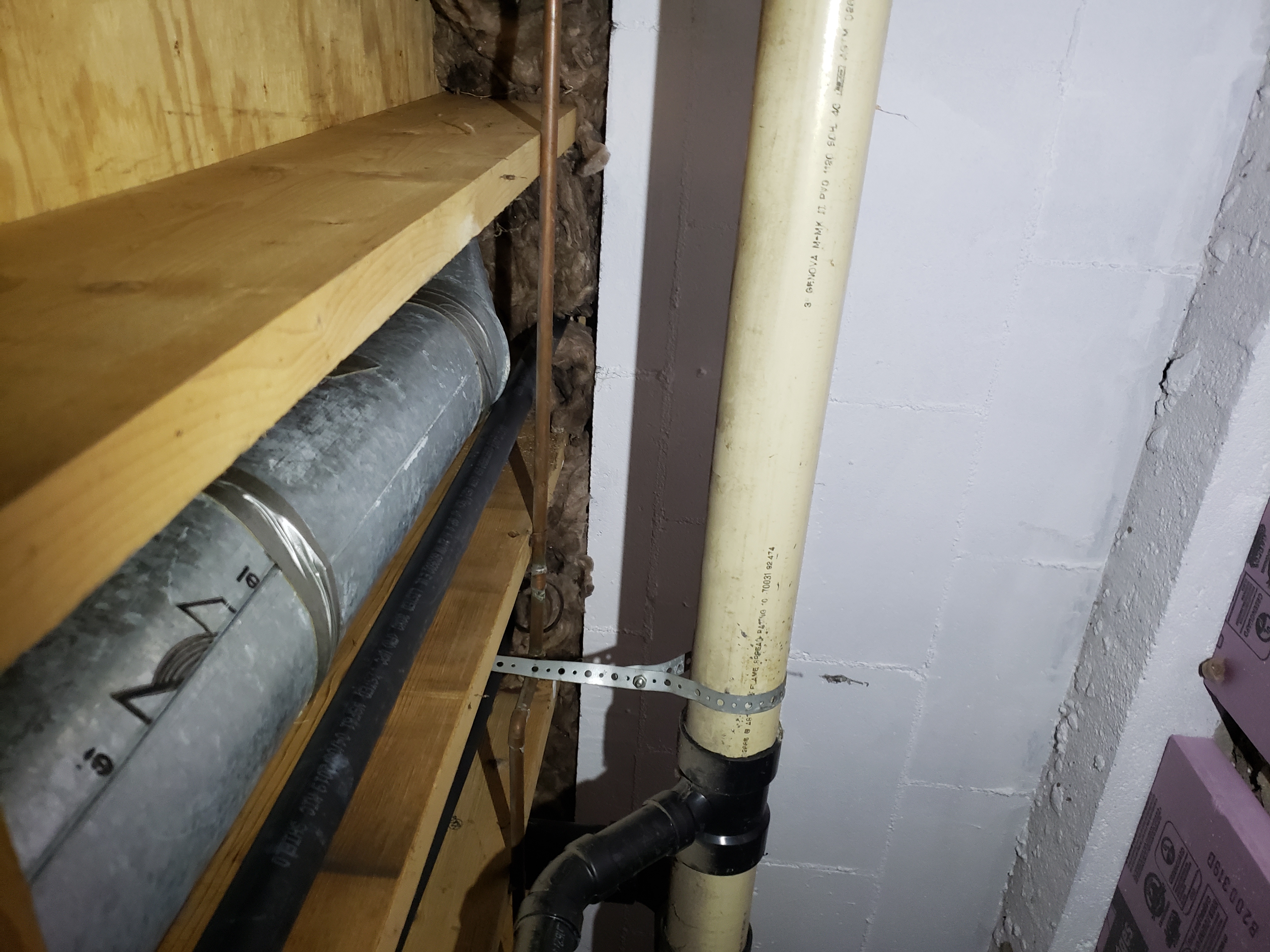Ya, I’m an efficiency lunatic. I posted about how 25% of our HVAC dollars are wasted in unoccupied spaces. Did you know that 30% of our energy costs are potentially wasted with a “vented” crawl space.
I’ve done some informal research about crawl spaces. Vented spaces can create moisture/humidity issues (think mold and mildew here). Not only can a crawl space create some funky smells, they waste a lot of money letting unconditioned air creep into conditioned spaces. *Note I’ve had some water issues at my house (that have since been fixed by removing old broken concrete and pouring new and properly sloped concrete). After solving the big moisture issues I set out to fix/improve/seal my crawl space.

This is the virgin crawl space. All of the discoloration you see on the block is due to water leaking through. (as previously stated, that issue has been fixed). For the record you want to keep your crawl space humidity below 50% (you can check this with a hygrometer).
Step one: Seal the block and prevent moisture creep and mold/mildew growth.

I used a sealant paint by Zinser I believe (doesn’t matter) that is supposed to seal the block and prevent mold/mildew growth for 10 years (we will see). This should help prevent some moisture from creeping into my crawl space.
Step 2

Insulate Crawlspace with XPS closed cell paneling. This has an insulating value of R10 and also acts as an additional vapor barrier. I have now sealed (2x for moisture) my craw space and added R10 insulation to keep out unseasonable air temps. I used some extra (scrap) materials (XPS comes in 4×8′ sheets) and was able to double up the insulation on the North wall of my house giving it an R20 insulation value. Additionally, you will want to insulate the rim joist.

Not my best picture here but you can see above the block and below the subfloor there is more (unfaced this is important) insulation to prevent air flow but also to not trap moisture and allow mold/mildew growth.
The last step is to lay down a vapor barrier or encapsulation over the “floor” of the crawl space. I will be using 10mil plastic to accomplish this goal (there are a number of materials that are suitable for this job, depends on your preference) I have not completed this stage yet as I’m still remodeling the house and will put quite a bit of wear and tear on this material moving/fixing plumbing issues. The vapor barrier is the most important part of reducing humidity in your crawl space. Then simply close and seal any vents and you are basically done. You can add a dedicated dehumidifier (depending on climate) you can also (though it seems questionable) add registers to the supply and return vents to create a “conditioned” crawl space- this is really only applicable in the winter time. No need to a/c your crawl space. *Note, this is some informal research of mine, opinions are wide ranging and vary significantly. This represents the majority of my crawlspace knowledge, is suited to my climate/high water table/budget and these fixes may not be appropriate for you*


Great delivery. Great arguments. Keep up the good effort. Jerrilyn Kermie Cornelia
Sweet blog! I found it while browsing on Yahoo News. Do you have any suggestions on how to get listed in Yahoo News? Chad Wilek Goer
Hurrah! Finally I got a web site from where I be able to really get useful information regarding my study and knowledge. Dina Ian Gerbold